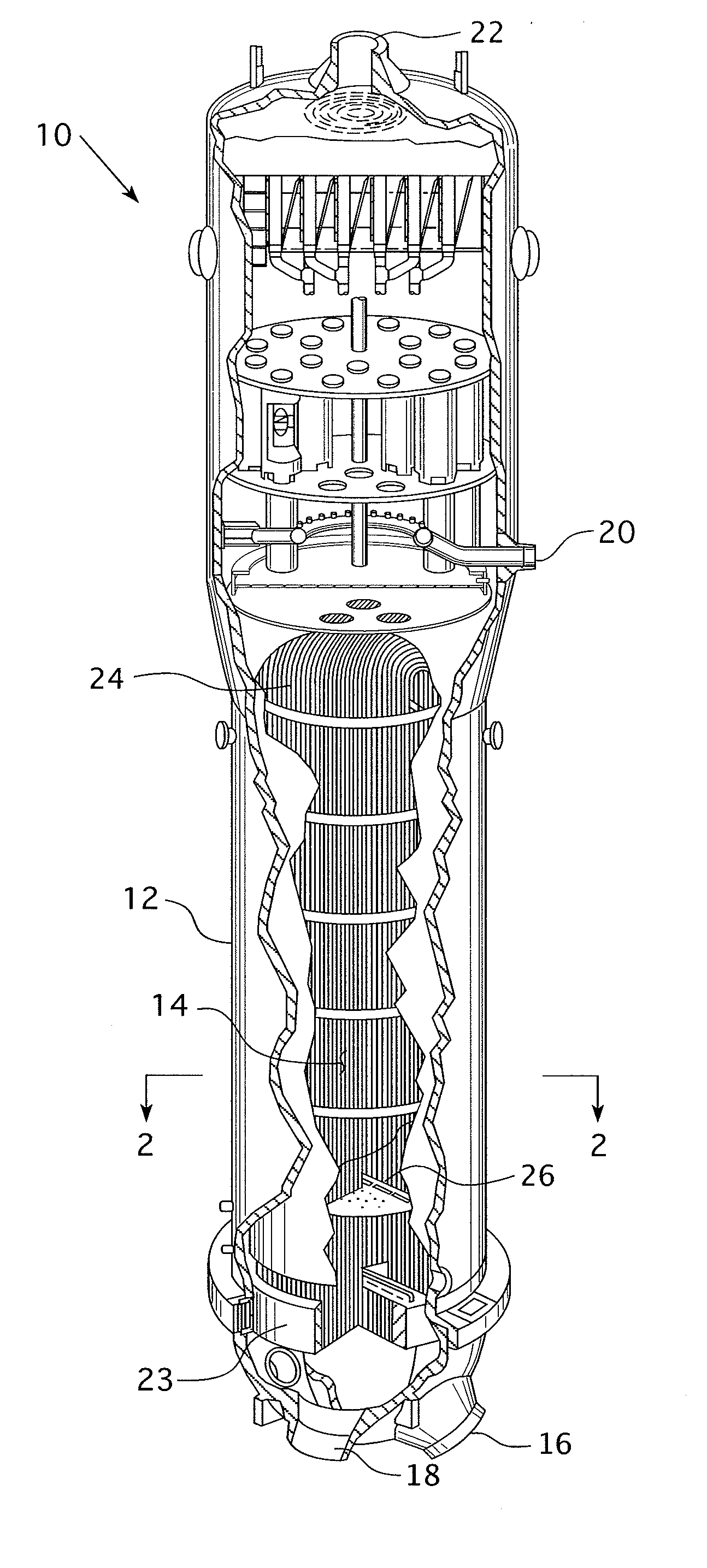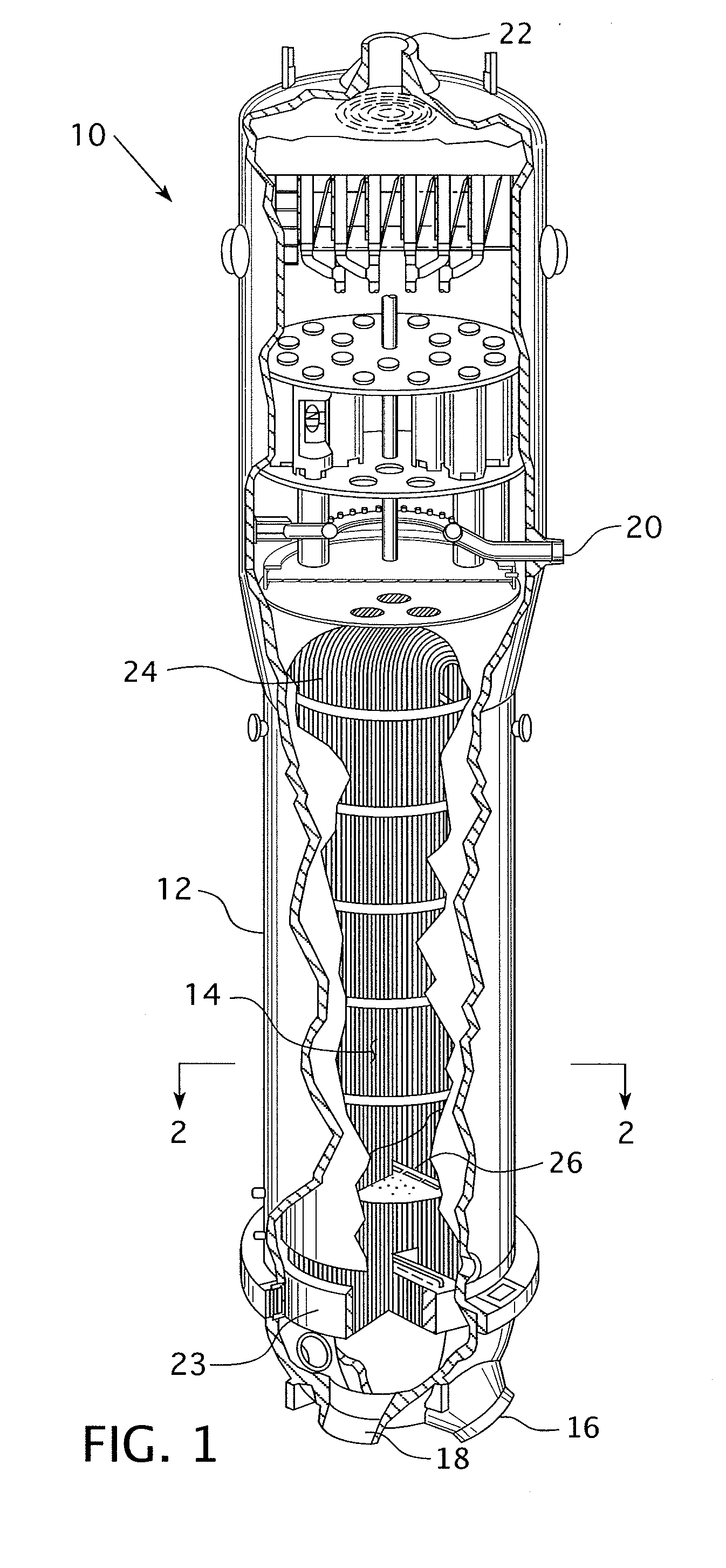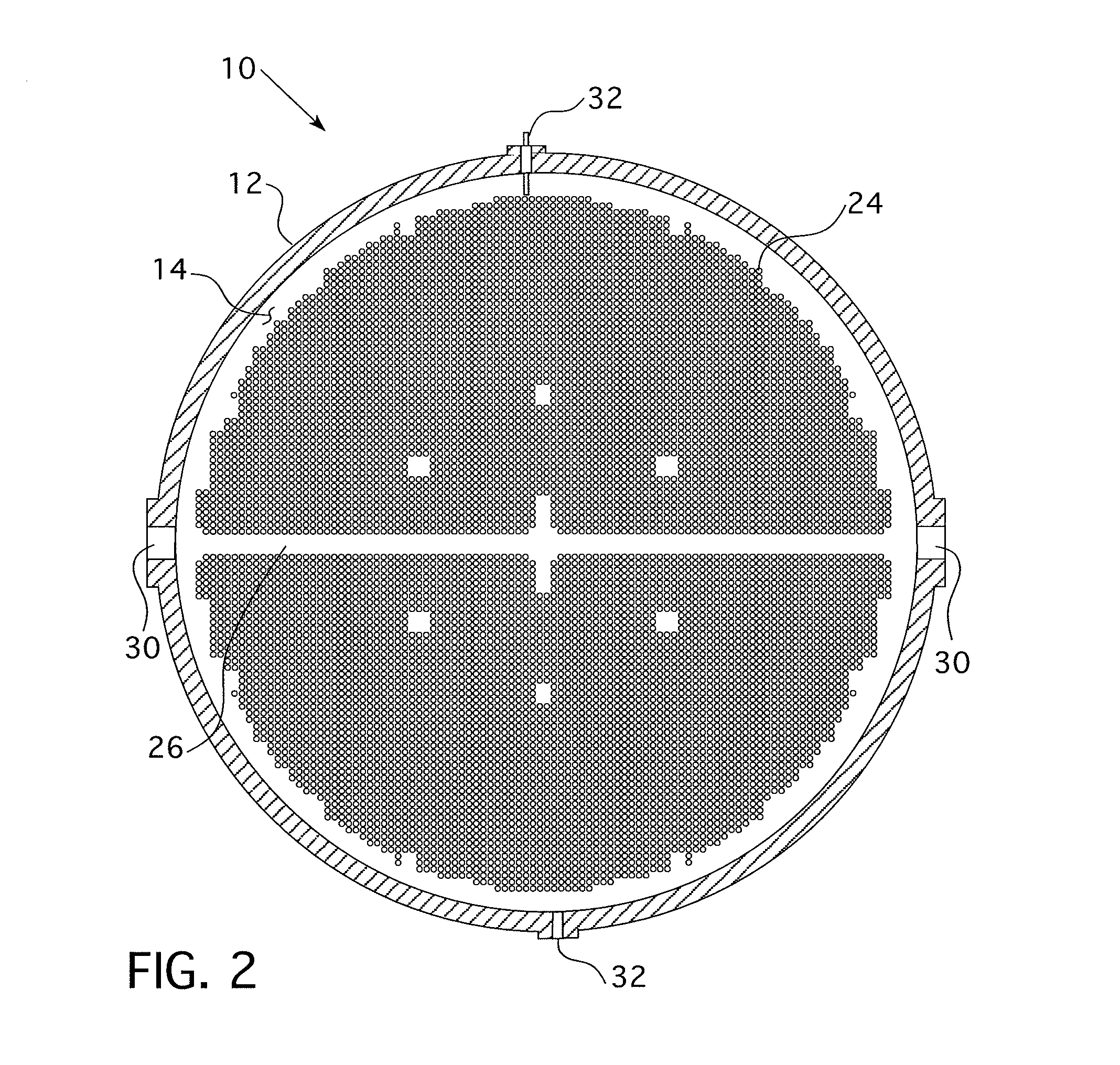Miniature sludge lance apparatus
a technology of sludge lance and miniaturization, which is applied in the direction of lighting and heating equipment, machines/engines, flush cleaning, etc., can solve the problems of inability to clean equipment, sludge between close patterns, and less effective at locations separated from the tube lane, etc., to achieve quick, accurate, repeatable setup
- Summary
- Abstract
- Description
- Claims
- Application Information
AI Technical Summary
Benefits of technology
Problems solved by technology
Method used
Image
Examples
Embodiment Construction
[0046]As used herein, “coupled” means a link between two or more elements, whether direct or indirect, so long as a link occurs.
[0047]As used herein, “directly coupled” means that two elements are directly in contact with each other.
[0048]As used herein, “fixedly coupled” or “fixed” means that two components are coupled so as to move as one while maintaining a constant orientation relative to each other. The fixed components may, or may not, be directly coupled.
[0049]As used herein, “temporarily coupled” means that two components are coupled in a manner that allows for the components to be easily decoupled without damaging the components. “Temporarily coupled” components are easy to access or otherwise manipulate. For example, a nut on a bolt that is exposed is “temporarily coupled” while a nut on a bolt within a typical transmission case sealed by multiple fasteners is not “temporarily coupled.”
[0050]As used herein, “correspond” indicates that two structural components are sized to...
PUM
 Login to View More
Login to View More Abstract
Description
Claims
Application Information
 Login to View More
Login to View More - R&D
- Intellectual Property
- Life Sciences
- Materials
- Tech Scout
- Unparalleled Data Quality
- Higher Quality Content
- 60% Fewer Hallucinations
Browse by: Latest US Patents, China's latest patents, Technical Efficacy Thesaurus, Application Domain, Technology Topic, Popular Technical Reports.
© 2025 PatSnap. All rights reserved.Legal|Privacy policy|Modern Slavery Act Transparency Statement|Sitemap|About US| Contact US: help@patsnap.com



